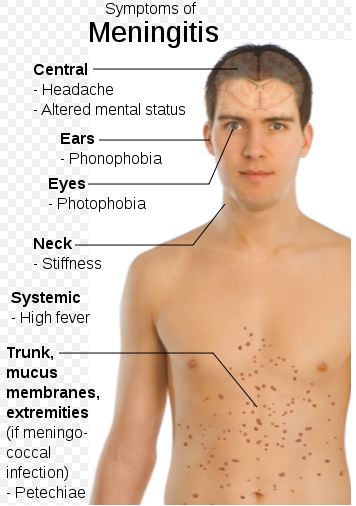Meningitis - cause, symptoms, prevention and cure:
Note: Only for information and precaution.
There are two types of Meningitis, viral and bacterial.The microbes that cause both viral and bacterial meningitis spread through close contact that includes activities like kissing and also sharing food, drinks or eating utensils.
Meningitis refers to the inflammation of the membranes surrounding the spinal cord. It can produce severe symptoms such as persistent headache, stiff neck, fever and nausea. Swelling can cause a range of long-term effects from memory loss and weakness to paralysis and seizures.
Bacterial meningitis, in addition to inflaming the meninges, sometimes causes dangerous blood infections called septicaemia.
Note: Only for information and precaution.
Meningitis refers to the inflammation of the membranes surrounding the spinal cord. It can produce severe symptoms such as persistent headache, stiff neck, fever and nausea. Swelling can cause a range of long-term effects from memory loss and weakness to paralysis and seizures.
Meningitis can produce symptoms such as persistent headache, stiff neck, fever and nausea. Viral meningitis cases usually resolve themselves in seven to 10 days and are almost never fatal. There is no vaccine that can prevent viral meningitis
Most with the viral form of the disease recover with no long-term effects. Though it is much less deadly than its bacterial counterpart, viral meningitis is much more common
It is encouraged to get vaccinated for bacterial meningitis even if diagnosed as viral. If person are diagnosed with meningitis others, near and dear, can take a preventive dose of antibiotics just in case they might have been infected.
If not treated quickly with powerful antibiotics, bacterial bloodstream infections can cause multi-organ failure, permanent neurological damage and death.
Bacterial meningitis, which has a five percent to 10 percent death rate, can be treated with antibiotics. Antibiotics work to treat only the bacterial form of the disease.according to the U.S. Centers for Disease Control and Prevention.

No comments:
Post a Comment